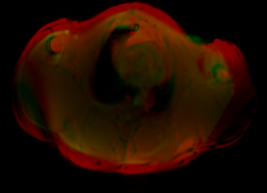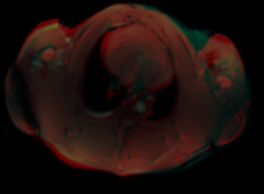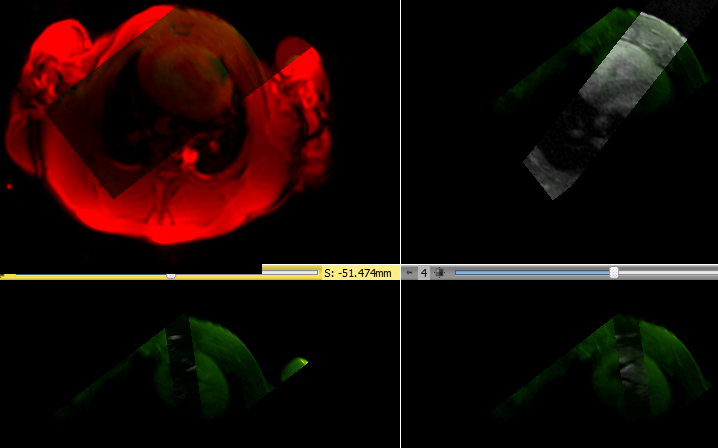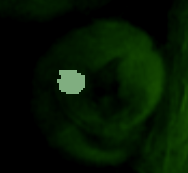Difference between revisions of "2014 Project Week:CardiacStemCellMonitoring"
From NAMIC Wiki
Ktdiedrich (talk | contribs) |
Ktdiedrich (talk | contribs) |
||
| Line 5: | Line 5: | ||
<ul> | <ul> | ||
<li>Karl Diedrich, AZE Technology, Inc.</li> | <li>Karl Diedrich, AZE Technology, Inc.</li> | ||
| + | <li>Nicholas Herlambang, AZE Technology, Inc.</li> | ||
<li>Yuka Matsuura, Stanford University School of Medicine</li> | <li>Yuka Matsuura, Stanford University School of Medicine</li> | ||
<li>Rajesh Dash, Stanford University School of Medicine</li> | <li>Rajesh Dash, Stanford University School of Medicine</li> | ||
Latest revision as of 15:50, 10 January 2014
Home < 2014 Project Week:CardiacStemCellMonitoringContents
Project Description
Monitoring engrafted stem cells in cardiac tissue with time series manganese enhanced MRI
Key Personnel
- Karl Diedrich, AZE Technology, Inc.
- Nicholas Herlambang, AZE Technology, Inc.
- Yuka Matsuura, Stanford University School of Medicine
- Rajesh Dash, Stanford University School of Medicine
- Phillip Yang, Stanford University School of Medicine
Objective
- The goal of the entire project is to restore cardiac function after a heart attack by injecting cardiac stem cells in the infarcted tissue.
- This part of the project seeks to monitor injected stem cells over time.
Approach, Plan
- Pigs (and soon mice) are given a heart attack by inflating a balloon in an artery
- Transgenic stem cells over expressing manganese importer are injected into the infarcted cardiac tissue
- Images are taken of the hearts at stem cell engraftment day 0, 7, and 45
- The images taken are
- PET-CT: PET signal is expected to be reduced in the infarcted tissue ROI on day 0 and increase over day 7 and day 45 as stem cells grow.
- Post GD: Gadolinium Enhanced MRI signal is expected to be high in the infarcted tissue ROI on day 0 and decrease over day 7 and day 45 as stem cells grow and replace the dead tissue.
- Post MN: Manganese is added a contrast agent, the signal is expected to be low in the infarcted tissue ROI on day 0 and increase over day 7 and day 45 as stem cells grow.
- The pigs are growing over the time points by as much as 30% over day 0 to 45.
- Register the locator MRIs of the 3 time points together and apply the transformations to to Post MN images. The Post MN images are too narrow to register directly but were taken in the same frame of reference with low resolution locator or scout images. The registration needs to scale based on the change in heart volume. The change in heart volume may be less than the change in total volume of the pigs.
- Register The time points by CT and then apply the transformations to the PET.
- Copy an ROI across the time points to measure the change in Post MN MRI, Post GD MRI, and PET signal over day 0, 7, 45
Progress
- Split 3 plane MRI locator images for 3 time-points into separate planes. Only the axial slices are used for image registration
- Registered the previous 1 (green) and previous 2 locator images to the current fixed (red) locator image.
- A rigid 6-degree freedom registration does not handle the growth of the juvenile pig. Current fixed locator in red, previous 1 moving image in green.

- A 7-degree freedom scaling registration fits the size of the smaller previous 1 and previous 2 images to the current fixed image. Current fixed locator in red, previous 1 moving image in blue.

- The Post MN (manganese) MRI images of the stem cell area are transformed into the frame of reference of the current stem cell area image.(Top left) The Post MN (manganese) image of the stem cells (green) is oriented inside the fixed locator (red). (Top right) Previous 1 Post MN slice transformed (Bottom left) Previous 2 post MN image (Bottom right) Previous 2 post MN image.

- Place an ROI around the potential stem cells on the current Post MN image and found intensity 67.64+/-5.932

Next steps
- Transfer the ROI to the images from the previous 1 and previous 2 time points and measure the MN MRI signal
- Repeat the measurement from PET-CT images of the same pigs to correlate PET signal to MN MRI signal.